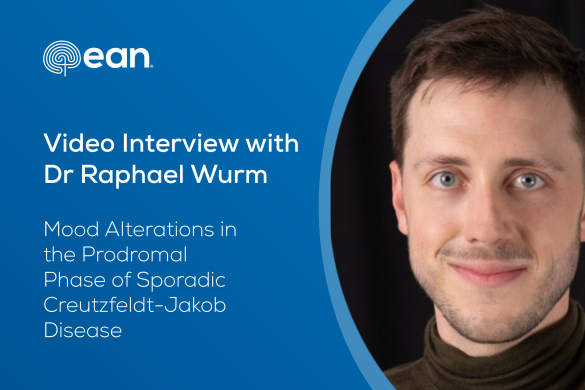For February 2016 we have selected: Siegal DM, Curnutte JT, Connolly SJ, et al. Andexanet alfa for the reversal of factor Xa inhibitor activity. N Engl J Med 2015;33:2413-2424.
There is an increased use of direct factor Xa inhibitors (like apixaban, rivaroxaban, and edoxaban) to prevent stroke in patients with nonvalvular atrial fibrillation since these medications have several advantages compared to vitamin K antagonists. However, there has been no specific antidote able to reverse their anticoagulant effects, for example in case of major bleeding or emergency surgery. Recently, andexanet alfa has shown the ability to bind and sequestrate factor Xa inhibitors in the vascular space, thus reestablishing the activity of endogenous factor Xa and decreasing the levels of anticoagulant activity. This anticoagulant reversal capability can be assessed by measuring thrombin generation and anti-factor Xa activity.
A randomized, dual-center, double-blind, placebo-controlled study was conducted to assess the efficacy and safety of andexanet to reverse the anticoagulant effects of apixaban (ANNEXA-A trial) and rivaroxaban (ANNEXA-R trial) in healthy subjects (50-75 years old). Subjects were randomized to receive intravenously andexanet as a bolus, or the bolus followed by a 2-hour intravenous andexanet infusion. Subjects were housed at the study site for 8 days, with safety outcomes assessed 15, 36 and 43 days after drug administration. In the ANNEXA-A group, 5 mg of apixaban were given twice a day for 4 days before being randomized to 400-mg intravenous bolus of andexanet (or placebo), or to the same bolus followed by a continuous infusion of 4-mg andexanet (or placebo) per minute for 120 minutes (480 mg in total). In the ANNEXA-R group, subjects received 20 mg of rivaroxaban once a day for 4 days, and then randomized to an 800-mg intravenous bolus of andexanet (or placebo), or to the same bolus followed by a continuous infusion of 8-mg andexanet (or placebo) per minute for 120 minutes (960 mg in total). Main outcome was the percent change in anti-factor Xa activity, measured with validated chromogenic assay of factor Xa enzymatic activity before and after andexanet or placebo (2-5 minutes after the bolus, and 5 minutes after the continuous infusion). As secondary outcomes, the proportion of participants with 80% reduction in anti-factor Xa activity, the changes in unbound (active) inhibitor plasma concentration and in thrombin generation, and the occurrence of an endogenous thrombin potential above the lower limits were also assessed.
A total of 101 subjects received andexanet, whereas 44 subjects had placebo. After the bolus, andexanet was able to quickly (within 2 to 5 minutes) reduce anti-factor Xa activity by 94% (vs. 21% placebo, 9 subjects; P<0.001) and by 92% (vs. 18% placebo, 14 subjects; P<0.001) in the 24 ANNEXA-A subjects and in the 27 ANNEXA-R subjects, respectively. Similar results were found within subjects who received andexanet bolus followed by continuous infusion. The reversal effects lasted for about 2 hours after both the bolus and the bolus followed by infusion. Andexanet induced at least 80% reversal of anti-factor Xa activity in the participants and normalized thrombin generation within 10 minutes after the bolus. The mean concentrations of unbound apixaban and rivaroxaban were significantly reduced within 2 to 5 minutes after andexanet administration vs. placebo (by 9.3 ng/ml vs. 1.9 ng/ml, P<0.001, and by 23.4 ng/ml vs. 4.2 ng/ml, P<0.001, respectively). Transient elevation of D-Dimer and prothrombin fragments 1 and 2 were observed.
“This study shows that andexanet is effective in reversing the apixaban and rivaroxaban anticoagulant action,” says Prof L. Jaap Kappelle, Division of Neurology, University Medical Centre Utrecht, The Netherlands. “The andexanet reversal ability reached its maximal effect within few minutes after the bolus and remained constant during the continuous infusion. Any biomarker of anticoagulation resumed placebo levels between 1 and 3 hours after andexanet administration. These results are very important due to the real need of a specific antidote for factor Xa inhibitors. Moreover, no major adverse events due to andexanet (in particular, thrombotic events) were reported.”
“Although these results come only from healthy subjects, andexanet seems to be a flexible, potent and rapid drug to quickly restore hemostasis in patients taking factor Xa inhibitors”, says Prof. Thierry Moulin, Department of Neurology, CHU of Besancon, France. “We are impatiently waiting for further clinical trials results, such as the ongoing ANNEXA-4 phase 3b-4 trial (ClinicalTrials.gov identifier: NCT02329327) which is evaluating the efficacy and safety of andexanet in patients with factor Xa inhibitor–associated acute major bleedings, and from those which will evaluate its use in the real stroke world.”
The other nominees for the FEBRUARY paper of the month are:
Strupp R, Taillibert S, Kanner AA, et al. Maintenance therapy with tumor-treating fields plus temozolomide vs temozolomide alone for glioblastoma: a randomized clinical trial. JAMA 2015;314:2535-2543. In this multicenter, open-label trial, the interim analysis showed that combined treatment with tumor-treating fields (locoregionally delivered continuously) combined with temozolomide (150-200 mg/m2/d) was significantly superior to temozolomide alone in improving survival in 325 patients with glioblastoma.
Arya R, Kothari H, Zhang Z, Han B, Horn PS, Glauser TA. Efficacy of nonvenous medications for acute convulsive seizures: a network meta-analysis. Neurology 2015; 85:1859-1868. Results coming from this network meta-analysis about non venous drugs used to treat convulsive seizures and convulsive status epilepticus show that intramuscular midazolam was superior to other drugs concerning time to seizure termination. Intranasal midazolam was the most effective to terminate seizure with 10 minutes of administration.
Franz DN, Agricola K, Mays M, et al. Everolimus for subependymal giant cell astrocytoma: 5-year final analysis. Ann Neurol 2015; 78:929-938. 2015. This paper presents data coming from an open-label phase II study in patients with subependymal giant cell astrocytoma associated with tuberous sclerosis complex treated with everolimus for 5 years. Most patients had both tumor volume and daily seizures reduction. No safety concerns were reported.
Fitzgerald KC, Munger AL, Kochert K, et al. Association of vitamin D levels with multiple sclerosis activity and progression in patients receiving interferon beta-1b. JAMA Neurol 2015;72:1458-1465. Results from 1482 patients with multiple sclerosis undertaking interferon beta-1b (BEYOND study) and prospectively followed for 2 years showed that low serum 25-hydroxyvitamin D levels were associated with higher rates of disease activity observed on brain MRI.






